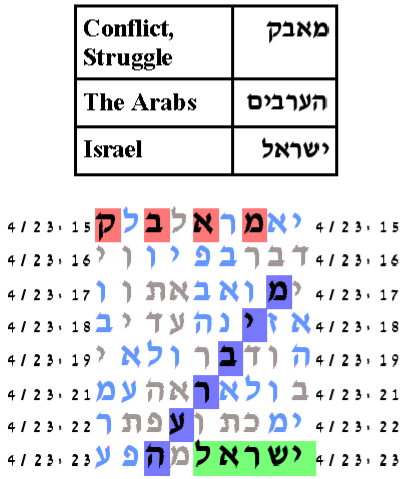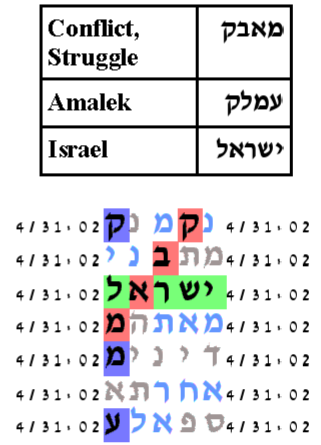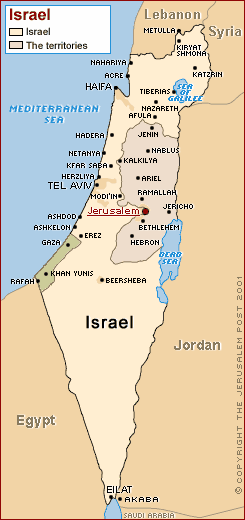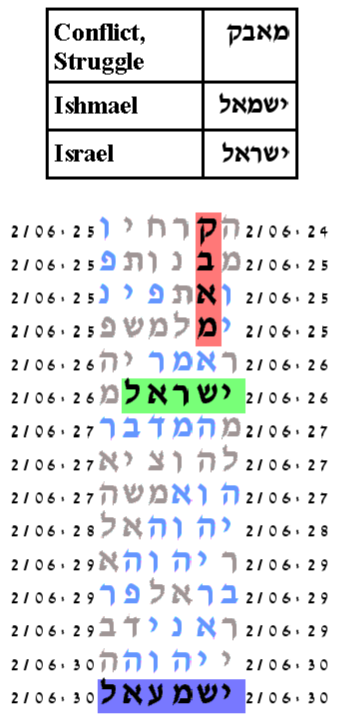| Home» The Mideast Crisis |
The Mideast Crisis: Palestine and Israel
If one looks at the surface of the conflict today, the Mideast crisis is a conflict or struggle between Palestine and Israel. We are told that the Palesinian-Israeli conflict and struggle constitutes the source of all evil and only its resolution will lead to regional peace and stability. In modern political /nationalist terms, it appears as a struggle between two peoples making claim to the same piece of ground. The struggle is a violent struggle. Israel suffers from Palestinian homocide/suicide bombers and rocket attacks targeting the civilian population. Multiple times, international financial and political resources have been injected, but in the end, the result has been and continues to be failure.
Perhaps one could think that the current crises is the result of the Six Day War (1967) when Israel captured Judea, Samaria and East Jerusalem. However, Joseph Farah writes,
But they didn't capture these territories from Yasser Arafat. They captured them from Jordan's King Hussein. I can't help but wonder why all those Palestinians suddenly discovered their national identity after Israel won the war.
The truth is that Palestine is no more real than Never-Never Land. The first time the name was used was in 70 A.D. when the Romans committed genocide against the Jews, smashed the Temple and declared the land of Israel would be no more. From then on, the Romans promised, it would be known as Palestine. The name was derived from the Philistines, a Goliathian people conquered by the Jews centuries earlier. It was a way for the Romans to add insult to injury. They also tried to change the name of Jerusalem to Aelia Capitolina, but that had even less staying power.
Palestine has never existed -- before or since -- as an autonomous entity. It was ruled alternately by Rome, by Islamic and Christian crusaders, by the Ottoman Empire and briefly by the British after World War I. The British agreed to restore at least part of the land to the Jewish people as their homeland.
There is no language known as Palestinian. There is no distinct Palestinian culture. There has never been a land known as Palestine governed by Palestinians. Palestinans are Arabs, indistinguishable from Jordanians (another recent invention, Syrians, Lebanese, Iraqis, etc.) (Joseph Farah, World Net Daily, Myths of the Middle East, October 11, 2000.)
To think that it is the Palestinian-Israeli conflict that has brought violence to the Middle East, would be grossly wrong. For violence was an integral part of the Middle East long before the start of the modern Palestinian-Israeli conflict. Efraim Karsh writes that it always has been that in the Middle East among the Arab Nations.
Political dissent is dealt with by repression, and ethnic and religious differences are settled by internecine strife and murder. One need only mention, among many instances, Syria's massacre of 20,000 of its Muslim activists in the early 1980s, or the brutal treatment of Iraq's Shiite and Kurdish communities until the 2003 war, or the genocidal campaign now being conducted in Darfur by the government of Sudan and its allied militias, not to mention the ongoing bloodbath in Iraq. As for foreign policy in the Middle East, it too has been pursued by means of crude force, ranging from terrorism and subversion to outright aggression. In the Yemenite, Lebanese, and Algerian civil wars, hundreds of thousands of innocent civilians perished; the Iran-Iraq war claimed nearly a million lives. (Efraim Karsh, The New York Sun, Pan-Muslim Friction,September 3, 2006)
The Israeli-Palestinian conflict did not bring violence to the Middle East. The violence mental set was already there among the Arabs. What is clear to us is that the Mideast Crisis and the suffering of the people of Israel cannot be solved by any political process, any treaties or agreements with the Palestinians no matter how guaranteed, any military interventions, or any clever financial incentives designed to get people to cooperate, be civilized and build civilized institutions.
We explore a few Torah code experiments to see the degree to which there are any statistically significant tables about the conflict. We choose the word מאבק, which is a noun meaning struggle or conflict. It is the verb form of this root which is used in the Torah describing Jacob struggling with an angel (Genesis 32:25). Rashi comments on this verb that the verb has the sense of being tied. He says that it
is the manner of two people who struggle to overthrow each other that one embraces the other and knots him with his arms.
There are three ways to destroy Israel: one is to kill all the children of Israel, the second is to embrace Israel so that Israel becomes assimilated and indistinguishable from the rest of society. The third way is to tie it and constrain it so that Israel loses its freedom. Historically, in different cultures and in different times, these three ways have been attempted repeatedly.
The struggle, מאבק, involves Israel, ישראל. For the one who struggles with Israel, we have three possibilities: Ishmael, ישמעאל, the Arabs, הערבים, and Amalek, עמלק. We will form the most compact table with each and determine the statistical significance.




 Documentaries and Tutorials
Documentaries and Tutorials
